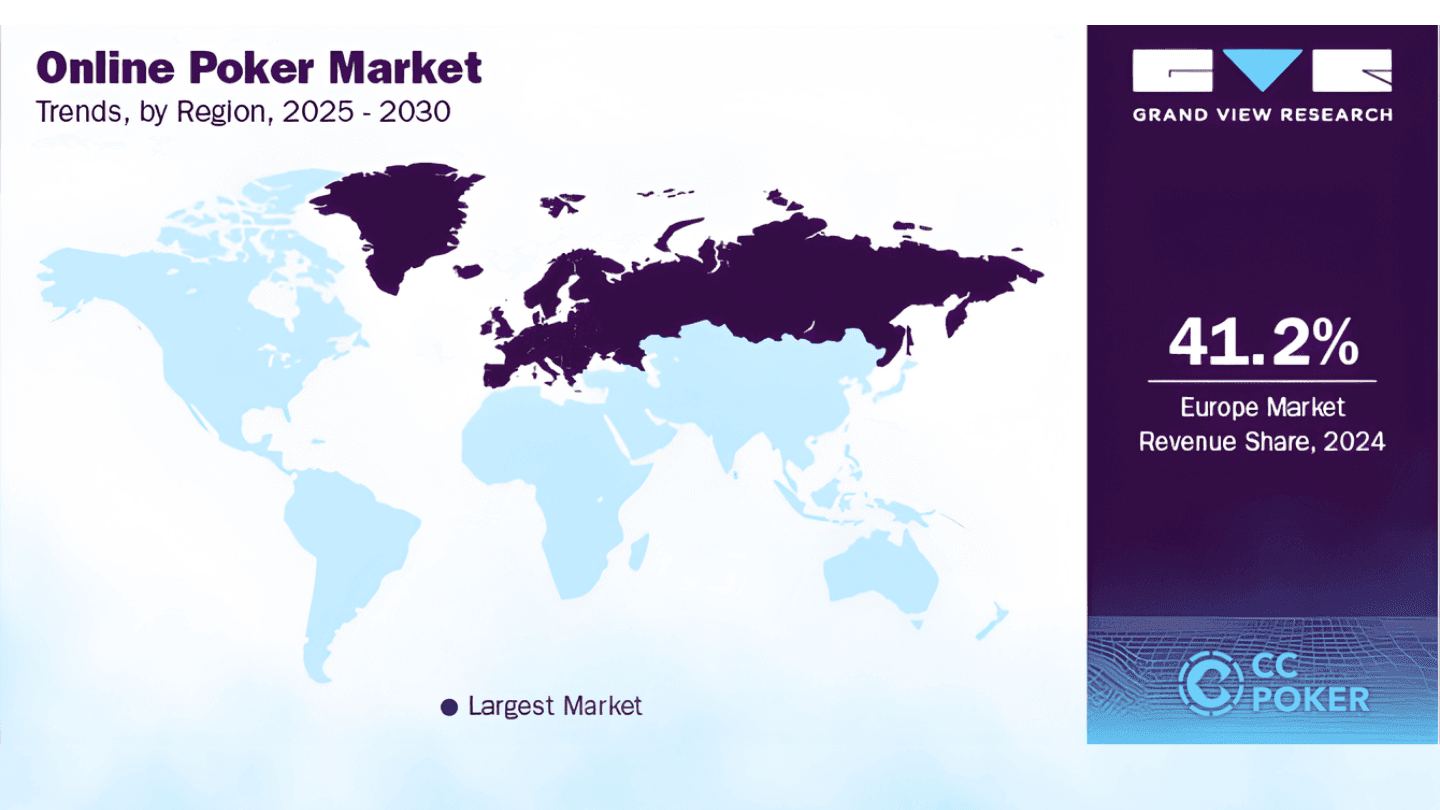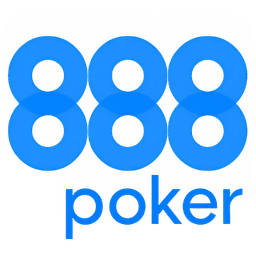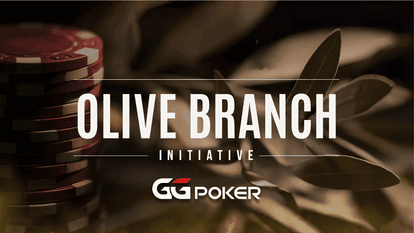Volume and Growth of the online poker market: CIS statistics amid global trends

Global online poker market — figures and growth leaders
After a period of stagnation, online poker is once again moving to the forefront. A format that many considered obsolete is gaining momentum again. The audience is growing, prize pools are increasing, and investor and big platform interest is bringing the game back to the center of the iGaming industry.
The market is especially active in the CIS. Here, the audience is growing faster than the “infrastructure”: new club networks, regional apps, and local tournaments with real prize money are emerging.
After several years of stagnation, the online poker market has entered stable growth. The game is gradually turning into an independent sector of the global industry.
According to Research & Markets, in 2024 the global market volume was estimated at about $5.3 billion. By 2030, growth is forecasted to $11.4 billion. The compound annual growth rate (CAGR) is comparable with that of esports and mobile betting.
|
Region |
Current Volume |
Growth Forecast (2025–2030) |
Highlights |
|---|---|---|---|
|
North America |
≈ $1.9 billion |
CAGR ~12% |
Strong regulation, major brands, stable player pool. |
|
Europe |
≈ $1.6 billion |
CAGR ~11% |
Large tournament guarantees, developed ecosystem. |
|
Asia-Pacific |
≈ $1.2 billion |
CAGR ~16% |
Fastest growth rate due to mobile and internet penetration. |
|
Other regions (LatAm, Africa) |
≈ $0.6 billion |
CAGR ~9% |
Market still forming, high novice engagement. |
Where Is the CIS online poker market heading?
The CIS market moves at its own pace — slower than the West but just as energetic. There's less official licensing here, but more “live” action. Players aren't waiting for new rooms — they're building their own clubs and launching their own games.
Research & Markets estimates global online poker is growing at about 13–14% annually, while the CIS pace is even higher — the audience is mobile, formats are flexible, and the P2P model has thrived perfectly.
|
|
Global Market |
CIS Region |
|---|---|---|
|
2024 Volume |
≈ $5.3 billion |
≈ $0.25–0.3 billion (estimate) |
|
2030 Forecast |
$11.4 billion |
$0.6+ billion |
|
CAGR |
13–14% |
15–18% |
|
Key Platforms |
PokerStars, GGPoker, PartyPoker |
PokerBros, PPPoker, ClubGG |
|
Main Factors |
Legalization, mobile tech |
Clubs, P2P, social networks |
Forecasts and New Trends for 2026
The online poker market is not just growing — it’s maturing. Everything is moving toward one goal: making the game faster, smarter, and more accessible. The biggest winners will be those who launch neural networks, refresh mobile UX, and streamline payments without extra barriers.
Today most regulars use GTO Solver, PokerSnowie, or Odin AI for hand reviews and frequency analysis. By 2030, such software will be a built-in feature in most apps. It won’t play for you, but it will show where your EV went negative.
Blockchain and Payment Solutions
Crypto is gradually ceasing to be exotic. More and more often, deposits and cashouts are made using stablecoins — fast, direct, and without paperwork.
Some platforms are experimenting with NFT badges and tournament tokens, turning ordinary events into interactive collectibles. It’s not mainstream yet, but the direction is clear — data protection and global transfers without delay.
Poker as Part of Streaming and eSports
Tournament broadcasts on Twitch and YouTube have become the norm. Leading series like GGPoker World Festival and PokerStars SCOOP have tens of millions of views. Content gives poker new life. Viewers come for emotion, and leave with a deposit.
The world is moving toward hybrid formats — part online, final tables offline. This approach is already being tested by WPT Global and GGPoker, combining media and sports.
Mobile UX and the New Game Rhythm
The main race in the coming years is for comfort. Poker rooms are eliminating the non-essentials: minimalist interfaces, auto-sizing, instant rebuy, adaptive lobby search. Players want to play — not scroll menus.
Simplicity is the new speed. The fewer steps between folding and the next hand, the higher the engagement.
By 2030, the online poker market will be unrecognizable. Neural networks will handle analytics, blockchain — finances, streams — the audience, and mobile UX — everything else.
Where the market is going and how much you can earn

Today a poker player can earn not just at the table but also in surrounding activities. The key is to know where the revenue is and what pays. Right now, some players grind 100,000 hands per month, some play series at GGPoker, others make money from streaming and affiliates — without ever opening Hold’em Manager.
|
Format |
Average Income |
Comment |
|---|---|---|
|
Cash games |
$1,500 – $5,000 per month |
Regular grind, rakeback is half the success. |
|
Online tournaments |
ROI 5–10% / up to $50,000/year |
Upstreaks bring money, downstreaks bring experience. |
|
CIS top-regs |
$50,000 – $100,000 per year |
Tournament grinders in big online series and live finals. |
|
Streaming and affiliates |
$5,000 – $8,000 per month+ |
Playing, audience, and partners — three streams into one channel. |
Players with cool heads consistently take their share, streamers turn sessions into shows, and those who combine both approaches are building businesses on discipline and audience attention.
This is the new poker economy: not random luck but systematic work.
Operator economics: How poker rooms make money
Every poker room is a well-structured system. While players argue over flops and bad beats, the operator counts the rake, shares turnover with partners, and spins tournament guarantees. Poker economics is just another game, but at a different level.
So, how do rooms make their money? It’s simple if you look without illusions:
✔️ Rake. Every pot is charged a fee — usually about 5%, capped at 4–5 blinds. Higher traffic, bigger turnover.
✔️ Rakeback and bonuses. To retain players, some rake is given back — fixed percentages, VIP programs, and seasonal missions.
✔️ Tournament fees. The buy-in is only half the ticket; the rest is a fee paid to the operator.
✔️ Affiliates and agents. Agents, clubs, and streamers bring players; they get a share of the rake (rev-share). For rooms, it’s TV- and banner-free advertising; for players, more guarantees and access to top trusted clubs.
✔️ Marketing via guarantees. Big series such as GGPoker World Festival or SCOOP aren’t just shows — they’re strategic player acquisition.
Large networks, like PokerStars and GG, have long since switched to a loyalty model: less aggression, more retention. The main goal is to bring the player back to the table again and again. After all, true profit in poker isn’t in a single hand, but in the long term.




Last news

A unique initiative called “Olive Branch” from GGPoker. Global unban

Formats that quickly gained popularity: Omaha, Mystery Bounty, Short Deck, mixed games
.png&w=414&q=75)
Fast-Fold / Zoom formats / “fast poker” — what it is, where it's available, and how to play
.png&w=414&q=75)
GGPoker blocked two accounts during the GGMillion$ tournament
Similar articles
Formats that quickly gained popularity: Omaha, Mystery Bounty, Short Deck, mixed games
An overview of popular poker formats: how to play Omaha, Mystery Bounty, Short Deck rules. How to choose your format and win!
RedStar Poker: tournament overview and how to get guaranteed prizes
Regular tournaments at RedStar 🔥 freerolls, Twister and major series with prize pools up to €7 million, rakeback deals and bonuses for newcomers.
Volume and Growth of the online poker market: CIS statistics amid global trends
Statistics and forecasts for the online poker market in 2026. ➥ Volume, growth rates in the CIS, global trends, and how much you can earn from poker











